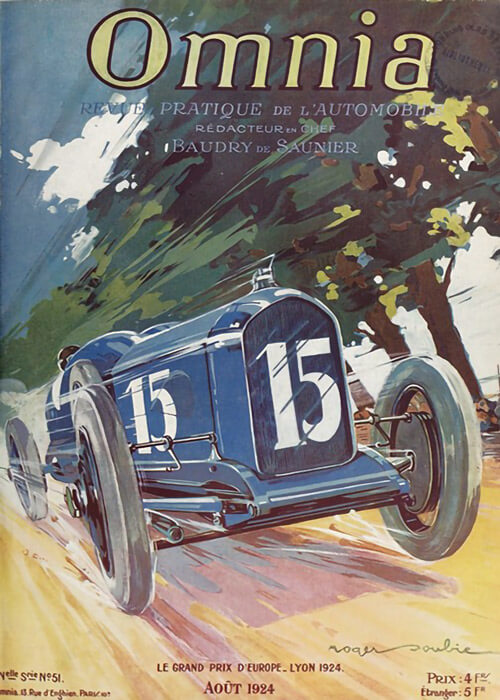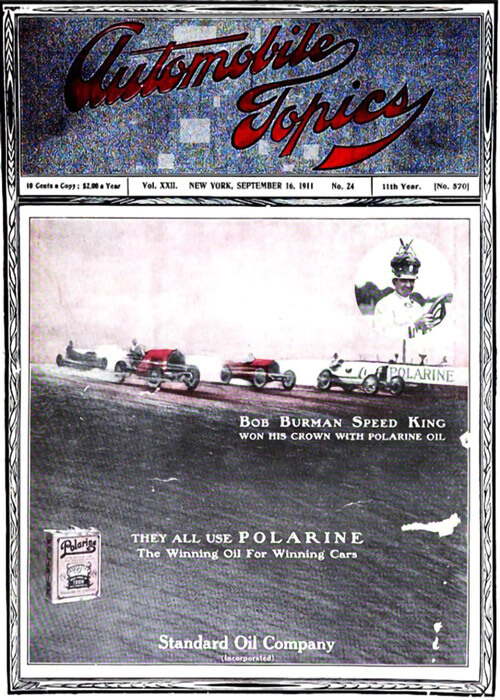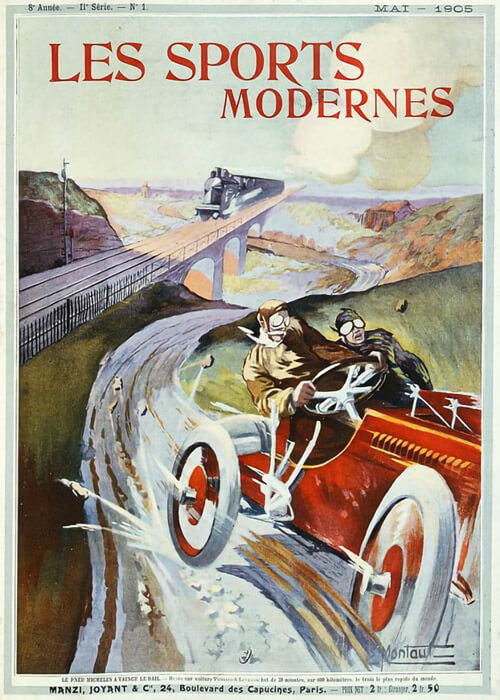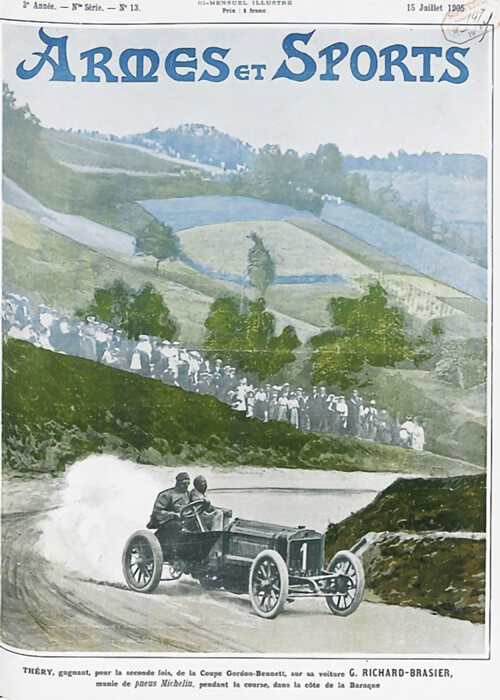This report shows a very critical opinion on the first Grand Prix race in itself. It states that this first Grand Prix was a failure, the two-day racing was mostly disapproved and that the road anti-dust praparation didn’t function. Above that, starting sequences the second day, were as if all cars were sent on their way simultaneously.
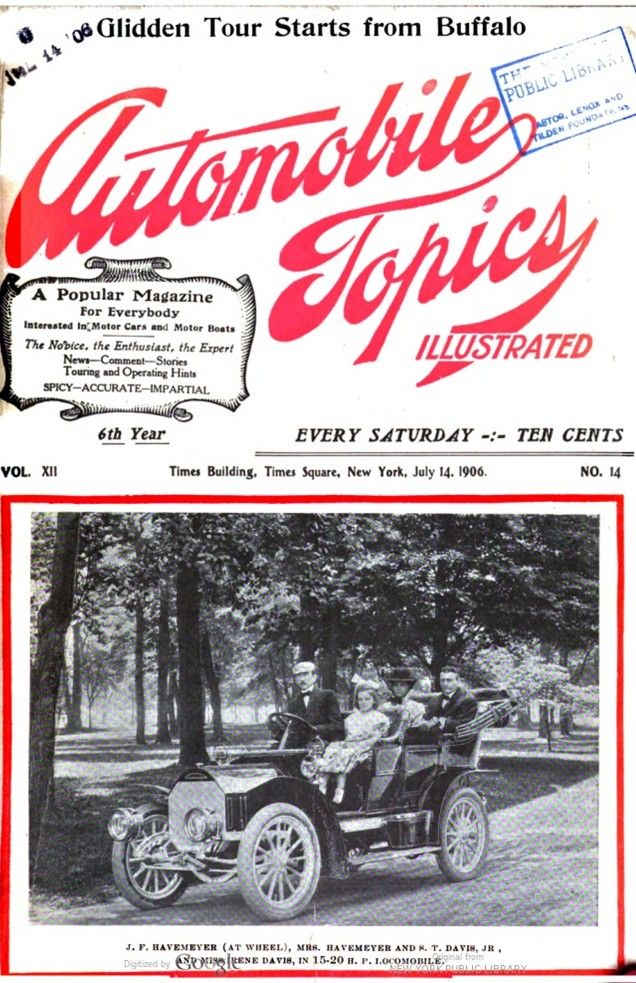

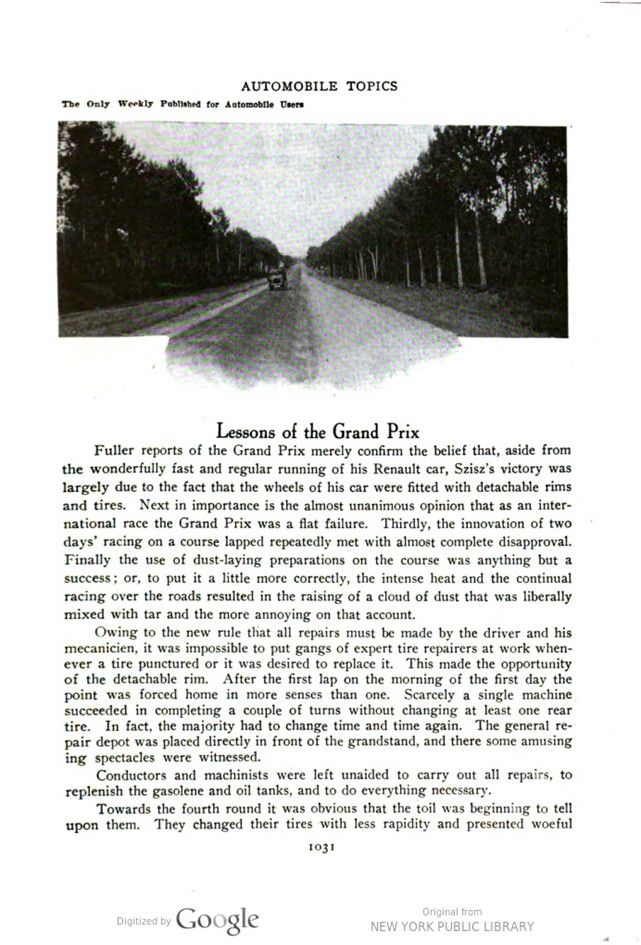

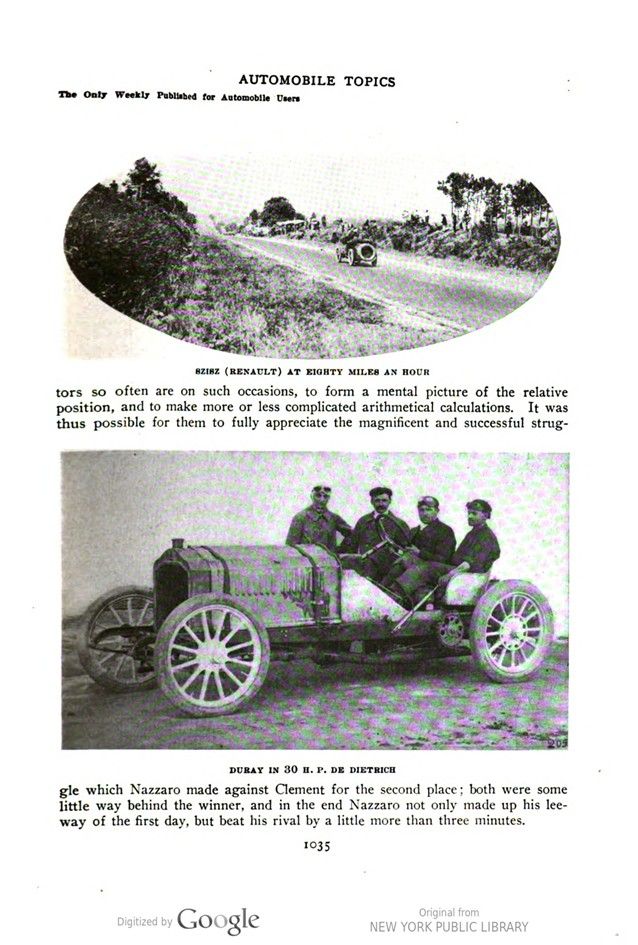
Text and jpegs by courtesy of hathitrust.org www.hathitrust.org, compiled by motorracinghistory.com
Automobile Topics, Vol. 12, No. 14, July 14, 1906, page 1031-1035
Lessons of the Grand Prix
Fuller reports of the Grand Prix merely confirm the belief that, aside from the wonderfully fast and regular running of his Renault car, Szisz’s victory was largely due to the fact that the wheels of his car were fitted with detachable rims and tires. Next in importance is the almost unanimous opinion that as an international race the Grand Prix was a flat failure. Thirdly, the innovation of two days‘ racing on a course lapped repeatedly met with almost complete disapproval. Finally, the use of dust-laying preparations on the course was anything but a success; or, to put it a little more correctly, the intense heat and the continual racing over the roads resulted in the raising of a cloud of dust that was liberally mixed with tar and the more annoying on that account.
Owing to the new rule that all repairs must be made by the driver and his mecanicien, it was impossible to put gangs of expert tire repairers at work whenever a tire punctured or it was desired to replace it. This made the opportunity of the detachable rim. After the first lap on the morning of the first day the point was forced home in more senses than one. Scarcely a single machine succeeded in completing a couple of turns without changing at least one rear tire. In fact, the majority had to change time and time again. The general repair depot was placed directly in front of the grandstand, and there some amusing spectacles were witnessed.
Conductors and machinists were left unaided to carry out all repairs, to replenish the gasolene and oil tanks, and to do everything necessary.
Towards the fourth round it was obvious that the toil was beginning to tell upon them. They changed their tires with less rapidity and presented woeful spectacles as they ate hasty meals, drank cooling draughts and completed their toil, all at the same time.
A remarkable feature of both days was the enormous heat. During a large part of the time many of the spectators were asleep, except when some special favorite came whizzing past. The crowds along the route were enormous, though on the grandstand fewer people were noticed than last year at the International cup contest. The absence of English and German visitors was much remarked.
Complaints were general as to the manner in which the grandstand had been placed. It was impossible from a single seat in the entire building to see more than the route in front of the stand. Complications also arose from the curious numbering of the cars. The general public obviously had a small idea of the relative positions of the competitors in the struggle.
As early as the day before the race as many as 10,000 enthusiasts were encamped in the neighborhood of the course. The result has been the usual extortion by hotel keepers and lodging-house proprietors, in some cases as much as $15 per night being charged for a single-bedded room in a hotel, while houses have been let for the two days of the race for as much as $600. One canny peasant, who possesses a field across which there is a short cut to the course charged five francs a time for the privilege of crossing it.
The weighing-in commenced on Sunday, when twenty-five cars were dealt with, and finished on Monday, when seven of the remaining nine were passed. The two who failed to qualify were Taveneaux with his Gregoire car and Barriaux with his Vulpes, the former having trouble with his cylinders on the way from Paris, and the latter being so much too heavy that there was no possibility of reducing his weight below the limit. The rest of the competitors all successfully passed the scales.
An ingenious system was adopted for sending off the competitors on the second day’s run, for although Szisz actually started at 6 o’clock, the timekeepers set back their watches so that his time of departure was recorded by them as being 5:45:30 2-5 a. m., this being his elapsed time for the first day’s circuit.
It is not obvious why the timekeepers chose to wait until 6 o’clock before actually starting the first competitor, for this fact in itself must have somewhat frustrated the fulfilment of the scheme, which was evidently designed, partly at any rate, to enable the spectators to better judge of the progress of events, by arranging that the time of day should be numerically identical with the hours occupied since the original start of the contest.
It was part of the rules that the competitors should start not only in the order in which they arrived the previous night, but with the same actual time difference between them, so that the first man in at the conclusion of the second day’s race should be the winner.
Prior to the time of departure, great excitement prevailed owing to the work which the competitors had to perform on their cars (during „running time“) in the way of lubrication and replenishing fuel. Szisz changed two tires, took in gasolene, and adjusted his lubricators in a very great hurry, for he was the first on the list to start. Everyone, in fact, seemed unduly nervous, and of them all Nazzaro was the only competitor who practically gave no attention to his car at all. Lancia, when given the word to „go,“ unfortunately stopped his engine, and after his mechanic had restarted it, he let in his clutch so quickly that the mechanic had to clamber on to the bonnet.
Hemery also experienced trouble in getting underway and had to push his car over the line so that he might set to work to find out what was the matter. Much to the disappointment of the spectators, too, the famous Jenatzy was no longer at the wheel of his Mercedes, Burton having taken his place. Szisz continued his splendid running throughout the day, and finished his 7th round (including the six covered on the previous day) in 6 h. 47 min. 45 sec.; his 8th round was finished in 7 h. 50 min. 28 sec.; his 9th in 8 h. 48 min. 12 2-5 sec.; his 10th in 9 h. 56 min. 7 2-5 sec.; his 11th in 11 h. 2 min. 13 sec., and his final round-with a broken spring-in 12 h. 14 min. 7 sec.
Szisz thus won the great French race, and in doing so was honored by the congratulations of M. Barthou, the Minister of Public Works, who was watch- ing the race on behalf of the Government.
Although Szisz proved victorious by his well-sustained exhibition of splendid driving, yet actually he was about nine minutes slower than Nazzaro on the second day’s running. It must be remembered that the method of starting on this, the second day of the race, was virtually equivalent to starting all the cars simultaneously from scratch on the first day and allowing them to run continuously without any interval through the night. It naturally added very considerably to the interest of the spectators in the event, for they were able to see how the race was going by merely watching it, and yet not reduced, as spectators so often are on such occasions, to form a mental picture of the relative position, and to make more or less complicated arithmetical calculations. It was thus possible for them to fully appreciate the magnificent and successful struggle which Nazzaro made against Clement for the second place; both were some little way behind the winner, and in the end Nazzaro not only made up his lee-way of the first day, but beat his rival by a little more than three minutes.
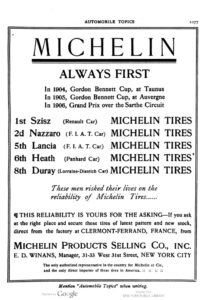


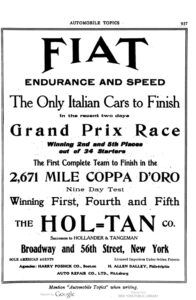
Photo captions for pages 1032 – 1035.
SZISZ AND HIS MECANICIEN REPLACE TIRES (Notice the adverts on the track: MICHELIN PANHARD LEVASSOR)
NAZZARO (FIAT) AT FERTE-BERNARD
DETACHABLE RIM USED ON SZISZ’S CAR
LANCIA (FIAT) TAKING A CORNER AT SPEED
(Note CAFÉ DE L’OUEST, Le Pneu MICHELIN Boit l’obstacle, Pneus DUNLOP Cycles & Automobiles, Huile OLEOMOTO)
SZISZ (RENAULT) AT EIGHTY MILES AN HOUR – DURAY IN 30 H. P. DE DIETRICH

